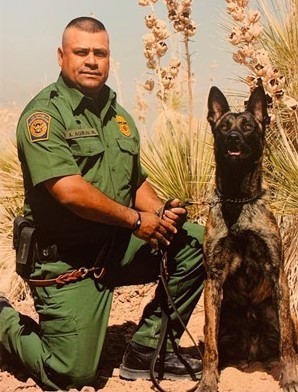Was the United States Border Patrol and its parent agency, Customs and Border Protection, prepared for operating under pandemic conditions? Did we have a plan?
The answer to the first question is, “we thought we were.” The answer to the second is a simple yes. Do the answers matter at this point? The rest of the world was not prepared.
Law enforcement in general is an exercise of immediate crisis response and also planning for a potential one. The SARS virus emergence in 2003 and the threat the H1N1 in 2009 were opportunities the Border Patrol took advantage of to develop pandemic plans on a local level. Table-top exercises with medical professionals, state health officials, and local community leaders led us to believe we were prepared. In the words of boxing champion Mike Tyson, “everyone has a plan until they get punched in the mouth.” COVID-19 was our punch in the mouth.
Our “on the shelf” pandemic plan increased the availability of personal protective equipment (PPE) like surgical masks, N-95 respirator masks, hand sanitizer, and a training program to evaluate the fit and use of this equipment. SARS never surfaced to any measurable extent along our border with Mexico. H1N1 was just as impactful—leaving our grand plan effectively untested.
Nevertheless, when COVID-19 revealed itself to be highly contagious capable of crossing oceans and borders rapidly, again we dusted the plan, conducted our tabletop exercises, and checked our supplies. One question loomed: what would be the burn rate of our PPE for personnel and those we apprehended? The second number in that equation is a variable.
Among the first significant steps recommended by health professionals to contain the spread of the virus was the closing of non-essential businesses. This was not an option for law enforcement and Border Patrol. CBP had to continue meeting its other obligations at all ports of entry and airports as essential trade and travel continued.
Social distancing was another recommendation. Although most arrests along the border are without use of force and involve compliant migrants, that is not always the case. It is impossible to socially distance yourself when you must apprehend someone who is running away. You cannot defend yourself from an assault at a distance. You cannot provide lifesaving care to a dehydrated or injured migrant, abandoned by their smuggler. You must speak to, transport, and temporarily detain people every single day as a Border Patrol agent.
Upon first contact, our plan was tested. Coronavirus was real and it was here. By early April 2020, over 160 CBP personnel contracted the virus with no geographical region spared. The Border Patrol was seeing cases emerge from Brownsville to San Diego. Supplies of PPE were quickly running low. It seems the rest of the world was experiencing the pandemic–and that was not part of the plan. Everyone wanted those critical safety resources as well.
On the local level, CBP personnel, to include the local Border Patrol leadership teams, met with community leaders as emergency operations centers were quickly opened and best practices were identified. On the national level, then CBP Commissioner Mark Morgan met daily with agency heads and staff to implement strategies to secure resources–that were in short supply world-wide. Through his, and other leaders’ efforts, funding sources were secured to procure needed resources that now had increased exponentially in value and scarcity.
Strategies to revolutionize how the Border Patrol operated under a pandemic were developed and long hours were spent crafting new protocols to isolate critical functions such as transport, processing, and detention duties to avoid cross-contamination. Distanced shift briefings were conducted outdoors and like most of America, virtual platforms were utilized to conduct meetings and disseminate intelligence.
Tragedy struck close to home on July 25, 2020. Border Patrol Agent Agustin Aguilar, Jr. died after contracting COVID-19 at Audie L. Murphy Memorial Veteran’s Hospital. His death was subsequently determined to be “in the line of duty” by a panel of Border Patrol Chief Patrol Agents. Agent Aguilar made the ultimate sacrifice and could not shelter in place like most of the country.
“Auggie” was not the first or last CBP employee to die in the line of duty from COVID-19. He was the first one close to me to pass after years of service together at the Eagle Pass South Border Patrol Station. He was a friend.
Auggie is survived by his wife Cecilia and three children. He was a team member for the station’s morale, welfare, and recreation program. For years, he planned station Christmas parties and other celebrations. He was a K-9 handler and mentored others. Auggie was an active member in his church and was a Boy Scout leader.
At Auggie’s funeral, then CBP Commissioner Mark Morgan presented a flag to Cecilia—part of a commitment he made to agents to attend all funerals of the fallen amid the pandemic.
As the world continues to deal with the impacts of the worst pandemic in at least a century, the sacrifices and efforts of many may go unnoticed. But we will honor them by learning and adapting from their deaths.
Randy Clark is a 32-year veteran of the United States Border Patrol. Prior to his retirement, he served as the Division Chief for Law Enforcement Operations, directing operations for nine Border Patrol Stations within the Del Rio, Texas Sector.


COMMENTS
Please let us know if you're having issues with commenting.